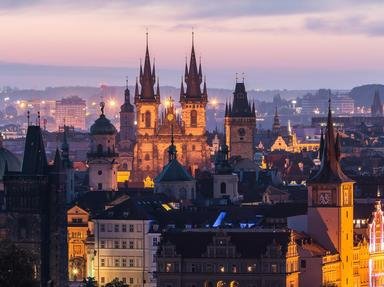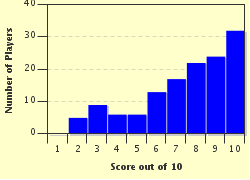Quiz Answer Key and Fun Facts
1. The Karluv Most has stood as the center of Prague since its initial construction in the 14th century. What is the Karluv Most better known as in English?
2. St Vitus's Cathedral is a 14th century church built on the remains of a 9th century church. The soaring flying buttresses and elaborate archways are indicative of what style of architecture?
3. Constructed in 1410, the Prague Orloj is the oldest working example of what type of device?
4. When in Prague you can pray at Europe's oldest operational house of worship for what ancient religion?
5. Looking down from the Hradčany or Castle District, the majestic Baroque architecture of the St. Nicholas Church dominates the Prague skyline. It is hard to imagine that the district St. Nicholas is located in is called Mala Strana, meaning what in English?
6. Completed in 1996, the Nationale-Nederlanden Building is a tribute to famed American dancers and movie icons Fred Astaire and Ginger Rogers. The Czech locals, however, call the building by what name?
7. The pristine resort town of Karlovy Vary is located 130km from Prague. The city has been famous as a resort since the 14th century because of what type of natural healing features?
8. What influential Jewish, German-speaking writer was born in Prague on July 3 1883?
9. Prague's Petrin Lookout Tower was built in 1891 and modeled after what contemporary European landmark?
10. The Czech people have along history of brewing beer. In the 19th century Bohemian brewers created a light lager style beer. In the modern day, the pale Czech lager is called by what name derived from the city it was first brewed?
Source: Author
adam36
This quiz was reviewed by FunTrivia editor
Pagiedamon before going online.
Any errors found in FunTrivia content are routinely corrected through our feedback system.

